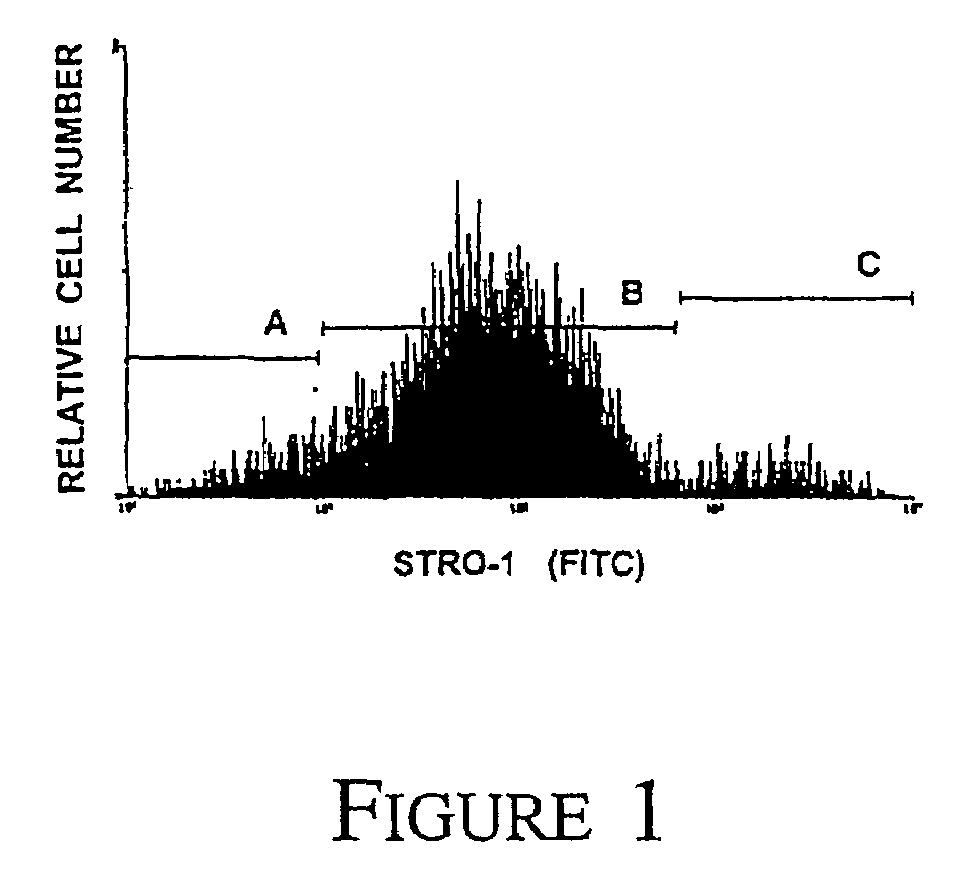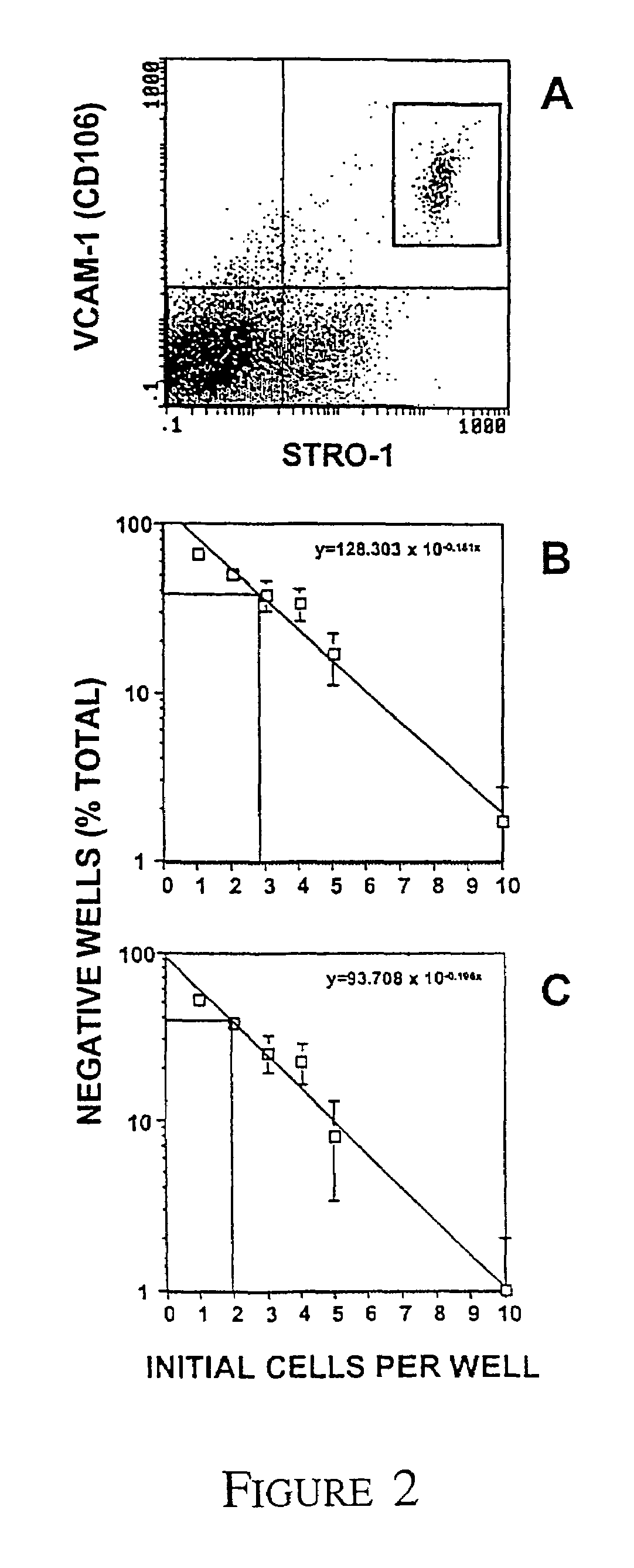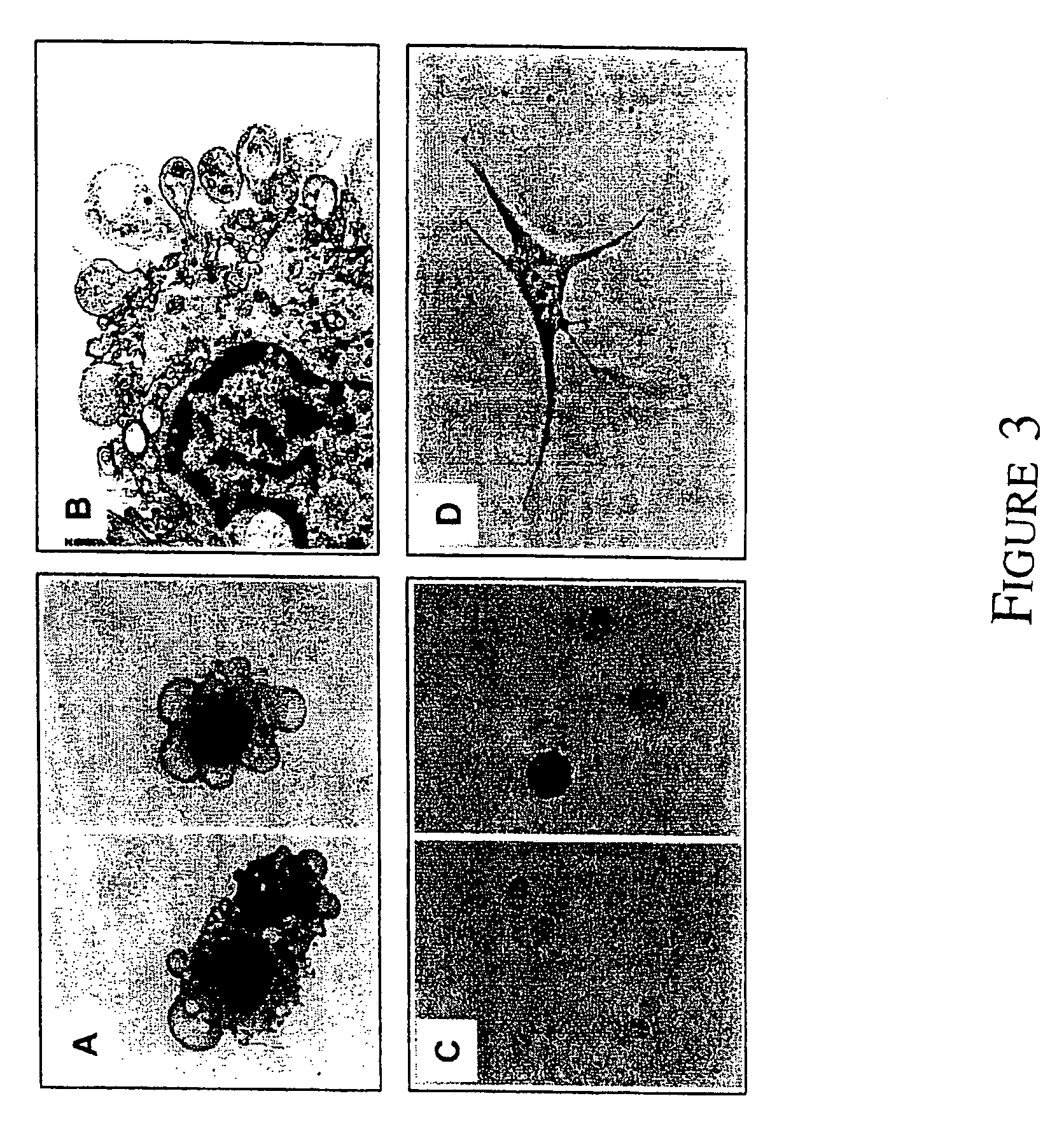Mesenchymal precursor cell
a precursor cell and mesenchymal technology, applied in the field of mesenchymal precursor cells, to achieve the effect of increasing the proportion of mpcs in the population and a large number of cells
- Summary
- Abstract
- Description
- Claims
- Application Information
AI Technical Summary
Benefits of technology
Problems solved by technology
Method used
Image
Examples
example 2
Repair of Articular Cartilage
[0145]Damaged articular cartilage generated by trauma or by diseases such as osteoarthritis and rheumatoid arthritis usually does not heal. However it is expected that this type of defect could be treated by implanting cultured MPCs of the present invention into the defect. The carrier may be pliable to mould to the shape of the defect and to promote round cell shape which is important for induction of chondrocyte differentiation. A suitable carrier may be constructed of collagen or fibrin. See Caplan et al. in U.S. Pat. No. 5,226,914.
example 3
Repair of Bone
[0146]A combination of MPCs as well as a suitable support can be introduced into a site requiring bone formation. Cultured MPCs contained in calcium phosphate ceramic vehicles may be implanted into the defect site. For appropriate methods and techniques see Caplan et al. in U.S. Pat. Nos. 5,226,914 and 5,837,539.
example 4
Anchoring of Prosthetic Devices
[0147]The surface of a prosthetic device can be coated with MPCs prior to implantation. The MSCs can then differentiate into osteogenic cells to thereby speed up the process of bony ingrowth and incorporation of the prosthetic device. See Caplan et al. in U.S. Pat. No. 5,226,914 and U.S. Pat. No. 5,837,539.
PUM
| Property | Measurement | Unit |
|---|---|---|
| molecular weight | aaaaa | aaaaa |
| molecular weight | aaaaa | aaaaa |
| pH | aaaaa | aaaaa |
Abstract
Description
Claims
Application Information
 Login to View More
Login to View More - R&D
- Intellectual Property
- Life Sciences
- Materials
- Tech Scout
- Unparalleled Data Quality
- Higher Quality Content
- 60% Fewer Hallucinations
Browse by: Latest US Patents, China's latest patents, Technical Efficacy Thesaurus, Application Domain, Technology Topic, Popular Technical Reports.
© 2025 PatSnap. All rights reserved.Legal|Privacy policy|Modern Slavery Act Transparency Statement|Sitemap|About US| Contact US: help@patsnap.com



